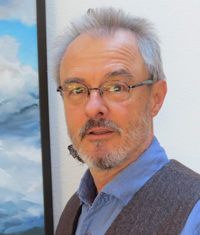Improving recoverable reserves and optimizing the production from mature fields often involves waterfloods, which can reach the end of their effectiveness, with still a great deal of oil left behind in the reservoir. New techniques and technologies can be used to revitalize the reservoir and get the oil flowing again from the same waterflood.
Welcome to an interview with Geoffrey Thyne and Teresa Nealon who discuss the technique of optimizing wettability to recover oil from mature fields.
Improving recoverable reserves and optimizing the production from mature fields often involves waterfloods, which can reach the end of their effectiveness, with still a great deal of oil left behind in the reservoir. New techniques and technologies can be used to revitalize the reservoir and get the oil flowing again from the same waterflood.
Welcome to an interview with Geoffrey Thyne and Teresa Nealon who discuss the technique of optimizing wettability to recover oil from mature fields.
1. What is your name and your relation to the oil industry?
Geoffrey Thyne has worked in the oil industry after graduating from Texas A&M in 1979 and later in academia on oil industry projects. Teresa Nealon received her B.S. in Geophysical Engineering from the Colorado School of Mines in 1987 and took a hiatus from the oil industry until starting ESalTM, LLC in 2013 with Geoffrey Thyne because she knows a good idea when she hears it.
2. What are some of the technological innovations in the oilfield that you see as the most relevant in today's climate?
Hydraulic fracturing and wettability modification.
3. What are some of the issues about the reasons for production decline that people often do not realize?
This is a natural process that is inherent to oil fields, but accepting 32% OOIP recovery (world-wide average) at the completion of waterflooding leaves the majority of oil in place. At ESal, we’ve figured how to get 5-25% additional OOIP recovery for these fields.
4. What are some of the reasons for flow decline in mature fields? What are some of the problems with the main remedies?
Flow declines in mature fields because of pressure depletion and less than optimum wettability. While producers can maintain pressure, they do not try and alter wettability to maintain production and reach much higher recovery factors.
5. What are your new solutions? How do they work? How and why does changing the salinity make a difference?
The simple solution is to optimize wettability. At optimal wettability, recovery factors can reach 90%. Wettability is a function of the water and oil chemistry and rock surface properties. Rock surfaces are charged in water, and the electrostatic attraction between the polar portions of oil and the charged rock surface can cause oil to adhere to the rock surface. Most of this adhesion can be reversed by changing water chemistry. Altering salinity can work in many fields and greatly increase recovery.
6. Do you have a few examples? Please describe some of your successes and also your lessons learned.
Ekofisk field (chalk), offshore UK, recovery increased from 19% OOIP to 51% OOIP by changing injection water chemistry. In Syria, Shell changed injection water chemistry and increased recovery by 10-15% OOIP in a sandstone field. BP demonstrated an increase of 10-15% OOIP in sandstone reservoirs during field tests. In all cases, there was no original intent to increase recovery, nor was there design of water chemistry based on understanding the mechanism, but it worked anyway. At ESal, we understand why these fields were successful waterfloods and why the fields with poor results were failures.
The most important lesson we have learned is few believe this is possible and most are so risk adverse that they will not try it, regardless of the record of successes. It reminds us of the response to hydraulic fracturing 15 years ago – ‘we’ve done this for years and it won’t work like you’re suggesting’. Most companies want 100% certainty to even commit to a pilot project, even when the cost is less than $150K.


7. What are your plans for the future?
Find those forward-looking companies or groups of individuals willing to take a small risk for a large reward and get in on the ground floor of the next big thing.
***
Learn about new solutions at the "Making Money with Mature Fields" Geosciences Technology Workshop, 5-6 October 2016, Houston, Texas. More information coming soon!